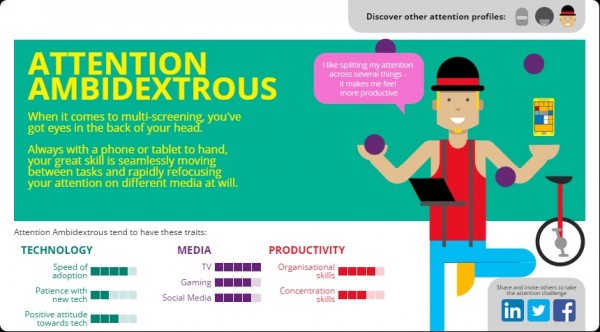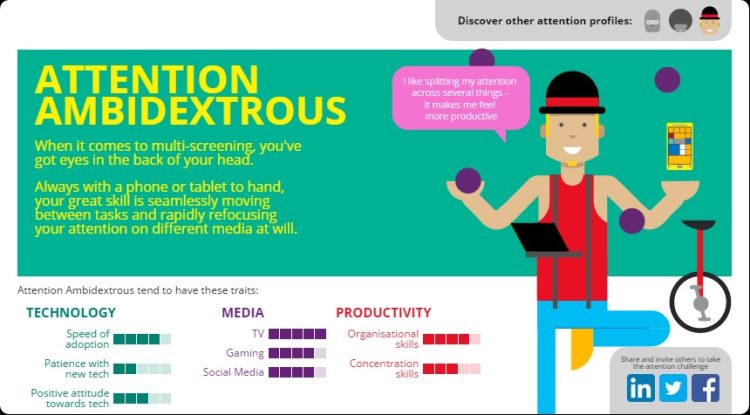
The older generation has long suspected that technology is shortening our attention spans, making it very difficult for us to concentrate on a single task. A study from Microsoft in the UK now has evidence that this is now true, and that humans have seen their ability to concentrate drop from 12 seconds in 2000 to a mere eight seconds in 2013 – for reference, according to the UK’s National Centre for Biotechnology Information a goldfish is capable of concentrating for nine seconds.
All is not lost for humanity. The researchers identified three types of attention spans, and the shortened time only adversely affects the tradition type of paying attention. This means that humans are getting better at multitasking and blocking out information that isn’t important to the task at hand.
https://www.youtube.com/watch?v=QSMyWDxQ7jE
Of the three, it is the Selective and Alternating attention types that gained the most from the 21st century. Selective attention is a person’s ability to block out distractions and information that isn’t important; much like ignoring phone messages while working on a story (it doesn’t always work). Alternating attention what is traditionally known as multitasking. The Microsoft study claims that 86-percent of all people have an additional display playing when watching TV, playing games, or just surfing the web.
It should be noted that the study still says that attention spans do not define how a person goes about a task, but rather only provide a guide as to how any individual will approach a series of tasks. In other words, our new shortened attention spans do not mean that we are all addle-brained children who are incapable of sitting still; but rather that we have adapted to our new technology filled environment.
[Source: Microsoft]


